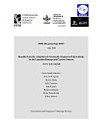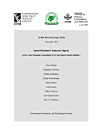To Reach the Poor: Results from the ISNAR-IFPRI Next Harvest Study on Genetically Modified Crops, Public Research and Policy Implications
Atanassov, Atanas · Bahieldin, Ahmed · Brink, Johan · Burachik, Moises · Cohen, Joel I. · Dhawan, Vibha · Ebora, Reynaldo V. · Falck-Zepeda, Jose · Herrera-Estrella, Luis · Komen, John · Chon Low, Fee · Omaliko, Emeka · Odhiambo, Benjamin · Quemada, Hector · Peng, Yufa Sampaio · Idah Sithole-Niang, Maria Jose · Sittenfeld, Ana · Smale, Melinda · Sithole-Niang, Idah Sutrisno · Valyasevi, Ruud · Zafar, Yusuf · Zambrano, Patricia
EPTD Discussion Paper Book 116 · Intl Food Policy Res Inst
Ebook
42
Pages
family_home
Eligible
info
reportRatings and reviews aren’t verified Learn More
About this ebook
Local farming communities throughout the world face productivity constraints, environmental concerns, and diverse nutritional needs. Developing countries address these challenges in a number of ways. One way is public research that produces genetically modified (GM) crops and recognize biotechnology as a part of the solution. To reach these communities, GM crops, after receiving biosafety agreement, must be approved for evaluation under local conditions. However, gaps between approvals in the developed and developing world grow larger, as the process of advancing GM crops in developing countries becomes increasingly difficult. In several countries, only insect resistant cotton has successfully moved from small, confined experimental trials to larger, open trials and to farms. By far, most GM crop approvals have been for commercial products that perform well under tropical conditions. However, complete information on public GMcrop research in developing countries has not been assessed. Will policies and research institutions in the developing world stimulate the safe use of publicly fundedGM food crops? The relatively few GM crops approved from public research, coupled with growing regulatory, biosafety capacity, trade, and political concerns, argue to the contrary. To tackle this issue, we identified and analyzed public research pipelines for GM crops among 16 developing countries and transition economies. Respondents reported 209 genetic transformation events for 46 different crops at the time when the survey was conducted. The pipelines demonstrate scientific progress among publicly funded crop research institutes in participating countries. Information and findings are presented for GM crops nearing final stages of selection. Additional details are provided for the types of genes and traits used, the breadth of genetic resources documented, implications for regulation, and the type of research partnerships employed. Regulations, GM crop approvals, choice of transgene, and policy implications are discussed as they affect this research. Based on these findings, recommendations are presented that would help sustain and increase efficiency of publicly supported research while meeting biosafety requirements. To do so, the study examines results concerning investments and choices made in research, capacity, and policy development for biotechnology. These indicate the risk and potential for GM technologies in developing countries. Policy makers, those funding biotechnology, and other stakeholders can use this information to prioritize investments, consider product advancement, and assess relative magnitude of potential risks, and benefits.
Rate this ebook
Tell us what you think.
Reading information
Smartphones and tablets
Install the Google Play Books app for Android and iPad/iPhone. It syncs automatically with your account and allows you to read online or offline wherever you are.
Laptops and computers
You can listen to audiobooks purchased on Google Play using your computer's web browser.
eReaders and other devices
To read on e-ink devices like Kobo eReaders, you'll need to download a file and transfer it to your device. Follow the detailed Help Center instructions to transfer the files to supported eReaders.









